Rank Species | Genus Erythronium Higher classification Erythronium | |
 | ||
Similar Erythronium, Erythronium dens‑canis, Moneses, Minuartia laricifolia, Ribes triste | ||
Erythronium americanum with dan jaffe
Erythronium americanum (trout lily, yellow trout lily, yellow dogtooth violet) is a species of perennial, colony forming, spring ephemeral flower native to North America and dwelling in woodland habitats. Within its range it is a very common and widespread species, especially in eastern North America. The common name "trout lily" refers to the appearance of its gray-green leaves mottled with brown or gray, which allegedly resemble the coloring of brook trout.
Contents
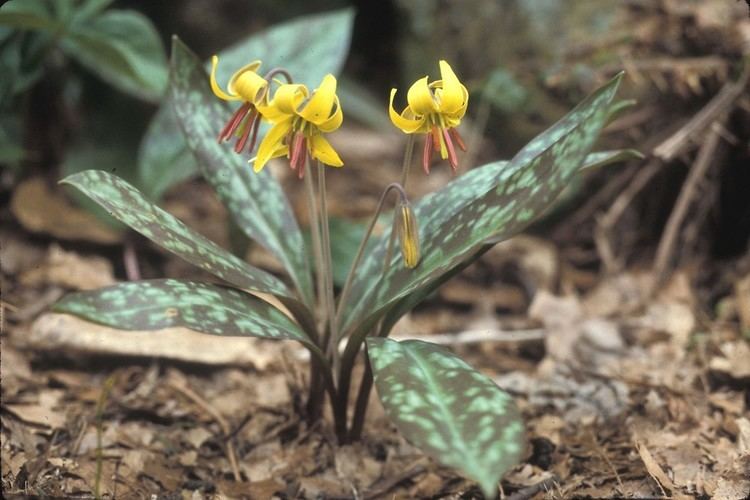
The range is from Labrador south to Georgia, west to Mississippi, and north to Minnesota.
Description
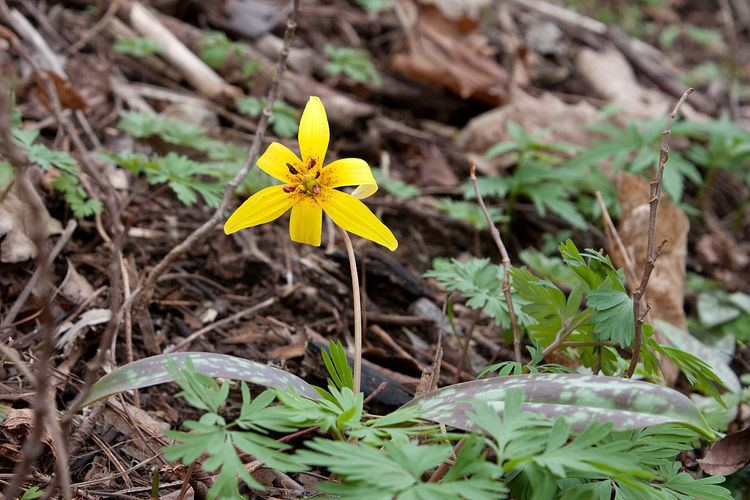
Trout lily does not flower for the first 4-7 years of its life. While the plant it too young to flower it will grow one leaf and once it has reached maturity may grow 2 paired leaves and a flower stalk. In any given trout lily colony 99% plants will be non-flowering and only have one leaf and .5% will have paired leaves and flowers.

Trout lily blooms in early spring before the trees growing above it develop leaves, this allows it to have unobstructed access to sunlight and also allows it to grow when soil nutrient levels are high. Each spring the plant will grow either a single or pair of 8-23cm long elliptic to lanceolate leaves, the leaves may be mottled with gray to purple and have entire leaf margins. Yellow trout lily produces an erect flower stalk with nodding one-inch, bisexual yellow flowers with 6 tepals, the tepals are composed (3) petals and (3) petal-like sepals which are both recurved upward. The fruit is a capsule 12-15mm long. The diploid number is 48. The flowers close at night.
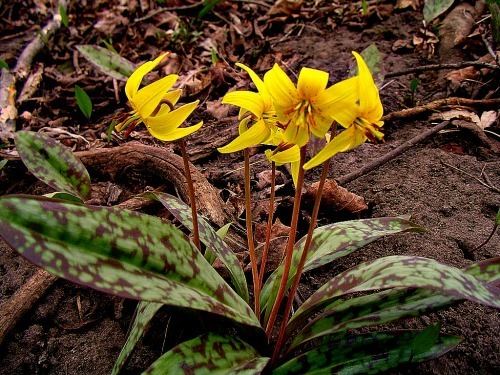
Trout lily grows from a corm, or underground bulb 15-28mm long and shaped like an oval. The corm is often located in the upper 11cm of soil although it may be as deep as 30cm. The bulbs of E. americanum are buried very deeply compared to other lily family plants. In North America E. americanum does not reproduce very effectively via sexual reproduction with only 10% of pollinated flowers developing seeds.
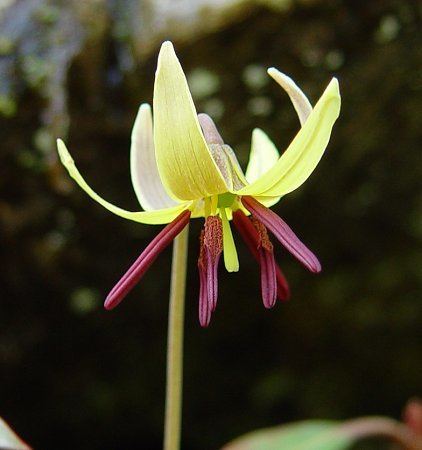
In North America, trout lilies grow in colonies that may be up to 300 years old. The individuals within a colony will often reproduce asexually via a "dropper" or from small corms budding off of the main corm. A dropper is a tubular fleshy stem that grows out from a parent corm, up toward the surface and then penetrates deep into the soil where another corm is formed from the tip of the dropper. The stem connecting the daughter and parent corm then dies.
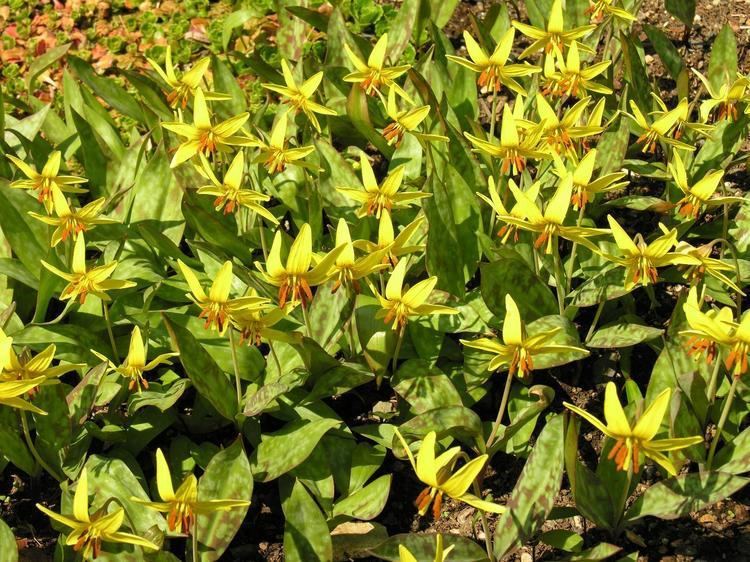
Trout lily is a myrmecochorous plant, meaning ants help to disperse the seeds and reduce predation of the seeds. To make the seeds more appealing to ants they have an elaiosome which is a structure which attracts the ants.
Subspecies
There are two subspecies, Erythronium americanum subsp. americanum and Erythronium americanum subsp. harperi. The americanum subspecies is a distributed more northerly and the harperi subspecies only occurs in the south, from Louisiana to Tennessee and Georgia. The subspeices differ in the shape of the capsule and stigma, with E. americanum subsp americanum having a capsule with a rounded, truncate, or short-apiculate tip and erect stigma lobes without groves. E. americanum subsp harperi has a distinctly apiculate capsule apex and stigma lobes which are both grooved and recurved.
